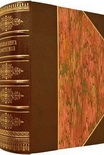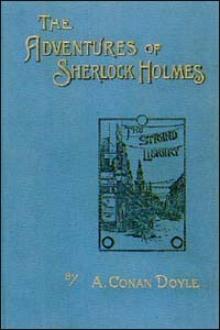My Autobiography, Charles Chaplin [books to read in your 20s .TXT] 📗

- Author: Charles Chaplin
Book online «My Autobiography, Charles Chaplin [books to read in your 20s .TXT] 📗». Author Charles Chaplin
After Lympne we drove together back to London to his house in Park Lane, where he was holding his annual Four Georges Exhibition of paintings for charity. It was a magnificent house with a large conservatory carpeted with blue hyacinths. On the second day I lunched there, the hyacinths had been changed and were of another colour.
We visited Sir William Orpen’s studio and saw a portrait of Philip’s sister, Lady Rocksavage, which was beautifully luminous. I had a rather negative reaction to Orpen, for he affected a dumb, incredulous expression which I thought was supercilious.
Another visit was to H. G. Wells’s country house on the Countess of Warwick’s estate, where he lived with his wife and their two sons, who had just come down from Cambridge. I had been invited to stay the night.
In the afternoon over thirty members of the Cambridge faculty showed up and sat cloistered together in the garden like a school group being photographed, mutely observing me as they would a species from another planet.
In the evening, the Wells family played a game called ‘Animal, Vegetable or Mineral’ which made me feel that I was taking an I.Q. test. Paramount in my memory are the icy sheets and going to bed by candle-light. It was the coldest night I ever spent in England. After I had thawed out the next morning, H.G. asked me how I had slept.
‘Quite well,’ I said politely.
‘So many of our guests complain about the room being cold,’ he said innocently.
‘I wouldn’t say it was cold, just icy!’
He laughed.
A few more memories of that visit to H.G. His small, simple study dimmed by the shade of the trees outside, by the window his old-fashioned, slanting writing desk; his pretty, dainty wife showing me around an eleventh-century church; our talk with an old engraver who was taking brass impressions from some of the gravestones; the deer that roamed in herds near the house; St John Ervine’s remark at lunch about the thrilling aspect of coloured photography, and my expressing an abhorrence of it; H.G. reading a paper from a Cambridge professor’s lecture and my saying that its prolix style sounded as though a monk had written it in the fifteenth century; and Wells’s story about Frank Harris. Wells said that as a struggling young writer he had written one of the first scientific articles touching on the fourth dimension, which he submitted to several magazine editors without success. Eventually he received a note from Frank Harris requesting him to call at his office.
‘Although I was hard up,’ said Wells, ‘I had bought a secondhand top hat for the occasion. Harris greeted me with: “Where the hell did you get that hat? And why the hell do you think you can sell articles of this nature to magazines?” He threw my manuscript on the desk. “It’s too intelligent – there’s no market for intelligence in this business!” I had carefully placed my hat on the corner of his desk, and during the interview Frank kept slamming his hand on the desk for emphasis, so that my top hat bounced around. I was terrified that at any moment his fist might come down squarely on it. However, he bought the article and gave me other assignments.’
In London I met Thomas Burke, author of Limehouse Nights. Burke was a quiet, inscrutable little man with a face reminding me of the portrait of Keats. He would sit immobile, rarely looking at the person talking. Yet he drew me out. I felt I wanted to unburden my soul to him, and I did. I was at my best with Burke, more than with Wells. Burke and I strolled around the streets of Limehouse and Chinatown without his saying a word. It was his way of showing them to me. He was a diffident man, and I never quite knew what he thought of me until three or four years later when he sent me his semi-autobiographical book The Wind and the Rain. His youth had been similar to my own. Then I knew he liked me.
When the excitement tapered off I had dinner with my cousin Aubrey and his family, and a day later visited Jimmy Russell of the Karno days, who had a pub. Then I began to think about returning to the States.
I had now reached the moment when I realized that if I stayed longer in London, I would begin to feel idle. I was reluctant to leave England. But celebrity could give me no more. I was returning with complete satisfaction – though somewhat sad, for I was leaving behind not alone the noise of acclaim or the accolades of the rich and celebrated who had entertained me, but the sincere affection and enthusiasm of the English and the French crowds that had waited to welcome me at Waterloo and at the Gare du Nord; the frustration of being hustled past them and bundled into a taxi without being able to respond hurt as if I were treading on flowers. I was also leaving behind my past. That visit to Kennington, 3 Pownall Terrace, had completed something within me; now I was satisfied to return to California and get back to work, for in work was orientation, all else was chimerical.
eighteen
WHEN I arrived in New York Marie Doro telephoned. Marie Doro telephoning – what that would have meant a few years ago! I took her to lunch and afterwards went to the matinée of the play in which she was performing: Lilies of the Field.
In the evening I dined with Max Eastman, his sister Crystal Eastman, and Claude McKay, the Jamaican poet and longshoreman.
The last day in New York, I visited Sing-Sing with Frank Harris. On the way he told me he was working on his autobiography, but thought he had left it too late. ‘I’m getting old,’ he said.
‘Age has its compensations,’ I ventured. ‘It is less apt to be brow-beaten by discretion.’
Jim Larkin, the Irish rebel and





Comments (0)